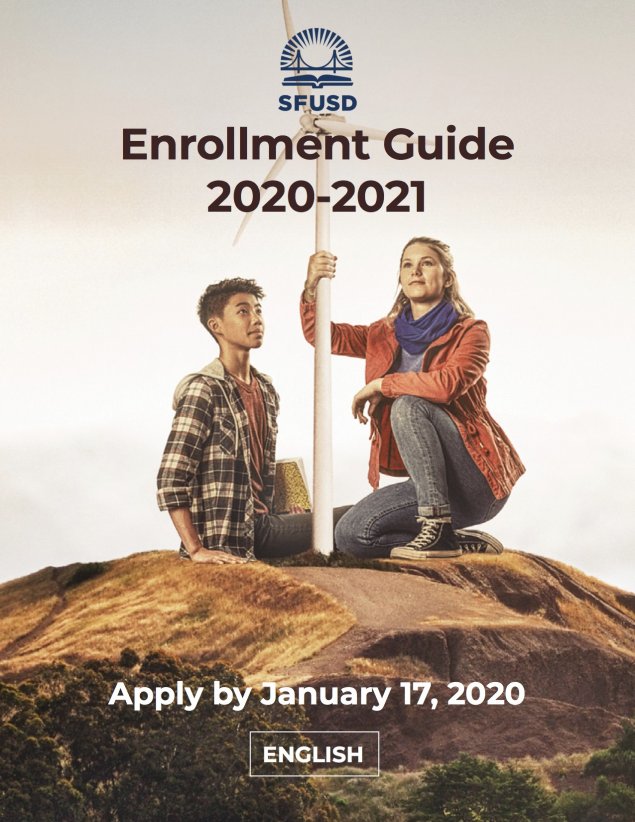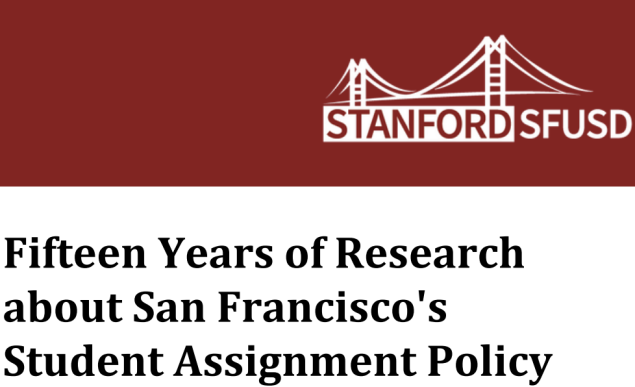April 2025 Update: Elementary Student Assignment Policy Link to this section
At the end of 2020, the SFUSD Board of Education approved a new zone-based school assignment policy for elementary schools, Board Policy 5101.2. Due to district circumstances, the new policy will not be implemented for the 2026-27 school year, as previously planned. SFUSD staff will continue working with district leadership and the Board of Education to make decisions about the new policy, plan community engagement, and determine the implementation timeline.
We know this is an important decision for SFUSD families, and we appreciate your engagement and your patience.
For the 2026-27 school year, the existing school assignment policy of citywide choice will be used (Board Policy 5101). Applicants to elementary schools will not be assigned to specific zones, but will have a tiebreaker to their attendance area school. Find more information about how our current assignment policy works. Applications for the 2026-27 school year will open in October 2025.

We believe that students are best served in learning environments that are racially and socioeconomically integrated.
Benefits of Diverse Schools Link to this section
Integrated learning environments have been shown to reduce bias, counter stereotypes, and foster meaningful relationships across differences — outcomes that we believe are vital to the overall well-being of the SFUSD's students and community.
Most importantly, research has demonstrated that school integration can help close racial achievement gaps — an outcome that is aligned with our core belief that the achievement gap is the greatest civil rights issue facing our students.
There is a robust body of research that shows benefits for all students from diversity — academic, cognitive, and social. Integrated learning environments have been shown to improve creativity, critical thinking, leadership, empathy, and collaboration — skills that we believe are critical for students to thrive in the 21st century.
Overview of the New Policy Link to this section
The San Francisco Unified School District is planning to change the way elementary school students apply to and enroll in schools in the future. The new policy seeks to fix the problems of the current assignment system, under which data shows has led to increased segregation along income, race, and academic performance, as well as under-enrollment of schools and community disconnection. In turn, this has led to unequal educational experiences and outcomes for many of our students.
This website describes the new zone-based elementary school assignment policy and will be used to share updates and opportunities to get involved. Be sure to sign up for our email newsletter to receive updates throughout the process.
Why are we changing student assignment? Link to this section
The current assignment system — in which families choose from any elementary school in the district — is not working for many students and families.
Stress and anxiety for families. Link to this section
Families have told us that the current system is complicated and causes them stress and anxiety. Some of the reasons are that there are 72 elementary and K-8 schools to choose from, the process takes several months, and there are numerous rounds and rules to keep up with.
Unpredictability for families. Link to this section
Families have also told us that the current system feels unpredictable, so much so that many call it “the lottery.” Although about 80% of families typically receive one of their top three school choices, families still feel anxious between when they apply and when they get their school assignment because they are not certain which of the 72 elementary schools they will get.
Far travel distance for families. Link to this section
Right now, many San Francisco families travel all over the city to reach their child’s school. On average, students living in the same Elementary School Attendance Area go to 27 different schools. This means that many students living in the same neighborhood are not going to school with each other, and not forming the social connections that bring communities together. Families have told us that they desire and deserve stronger connections with their fellow neighbors.
Segregation in our schools. Link to this section
Our own SFUSD data shows that, under the current system, more schools are segregated by income, race/ethnicity, and academic performance than they were 10 years ago. Many of our low-income students are concentrated in high-poverty schools, and historically marginalized students--Pacific Islanders, English Learners, Latinx, and African Americans--are more often enrolled in high-poverty schools, while white students are more often enrolled in low-poverty schools.
What is the new assignment system trying to achieve? Link to this section
Because the current assignment system is not working as intended, the new policy seeks to achieve three goals:
- Diversity: Create integrated elementary schools that provide students with the opportunity to experience the rich diversity of the city of San Francisco.
- Predictability: Offer families of elementary school students a high degree of predictability about where their children will be enrolled in school.
- Proximity: Create strong community connections to local schools and facilitate enrollment in an elementary school within a reasonable geographic distance.
What will the new student assignment system look like? Link to this section
The new policy will change student assignment in two main ways: how students will choose schools and how students will be assigned to schools.
How Students Will Choose Schools Link to this section
Our current assignment system uses districtwide choice, meaning families can choose from over 70 elementary schools and programs. In the new system, families will have choice within zones. Zones are boundaries drawn around groups of elementary schools and programs, and students will be able to apply to any of the schools and programs in their zones. A student’s zone is based on where they live. When they apply for elementary school, students can list as many schools from their zone as they want in order of preference. Each student will be guaranteed a school in their zone.
How Students Will be Assigned to Schools Within Their Zone Link to this section
Diversity categories will help with assigning students throughout a zone so that each elementary school or program’s enrollment reflects the diversity of San Francisco’s students. Diversity categories are based on aggregate measures of neighborhood characteristics such as household income, English proficiency, and race/ethnicity, and are attributed to all students who live in the same area. Diversity categories will be attributed to each student based on their residence. That means diversity categories aren’t based on an individual student’s characteristics. Instead, we use information about the student’s neighborhood to assign the student to a school in a way that promotes diverse enrollment at all schools throughout the zone.
The new system will also continue to use tiebreakers to help assign students when more students apply for a school than there are seats available. These have been simplified to three tiebreakers that will be used to determine which students receive a priority, in the following order:
- Sibling: Applicants who are applying to an older sibling’s school.
- Equity: Applicants who either reside in federal public housing or in historically underserved areas of San Francisco.
- Prekindergarten: Applicants in prekindergarten who want to go on to transitional kindergarten or kindergarten at the same school.
Read previous updates about implementation progress
Learn More Link to this section
This page was last updated on May 27, 2025










